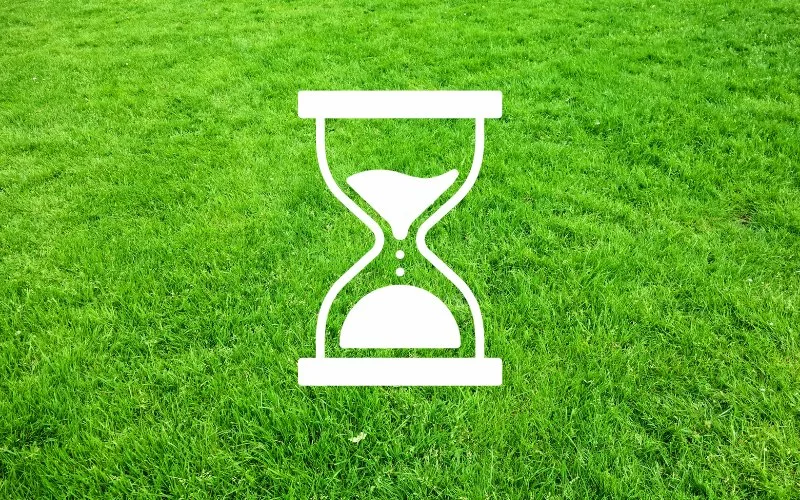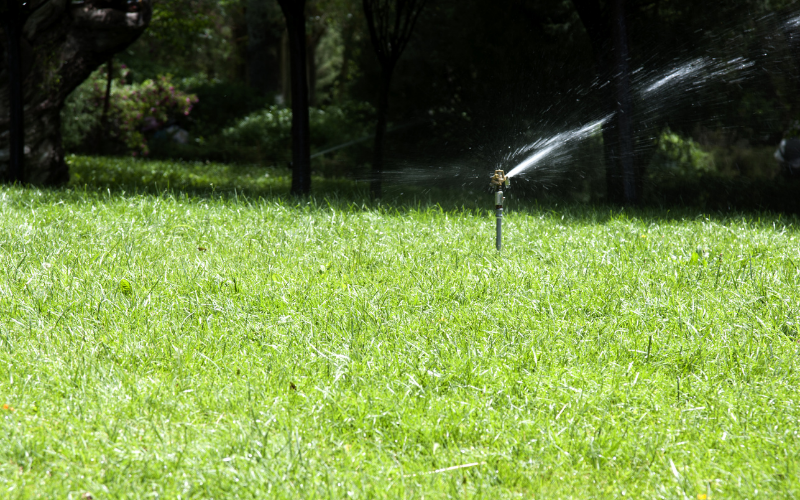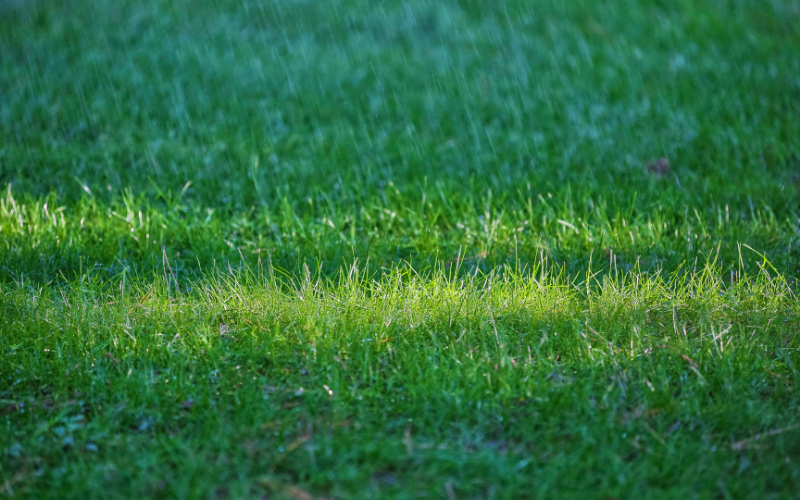Sometimes we forget that grass, like all living things, has a finite life span. Eventually, it dies. How long does grass live? That depends on a number of factors.

How Long Does Grass Live?
Different types of grass have different lifespans. However, common turfgrasses live about 3-5 years before dying. An individual blade of grass lives around 40-50 days.
Annual versus Perennial Grass
Annual grass germinates from seed, has flowers, and produces seed all in one year. An example is annual ryegrass, which grows in the fall, flowers, and has seed in early spring, then dies. Annual ryegrass is often overseeded in Bermuda lawns, so they are green in the winter. After it dies, the ryegrass becomes organic matter and improves the soil.
Perennial grass lives for more than two years. It germinates, grows, flowers, and has seed, but the original plant lives for several years. Bermuda grass and most other turfgrass are examples of perennial grasses. Hybrid types of turfgrass may be sterile, so they do not produce flowers or seed, or the seed they do produce will not grow into a plant like the parent plant.
Factors Affecting Grass Life Span
While a single grass plant may not live all that long, a lawn is made up of many grass plants. Hopefully, as one plant dies, another will take its place. There are some factors that affect how long a lawn looks nice and has growing grass plants.
Stolons and Rhizomes Versus Clumps
Turfgrass reproduces vegetatively in addition to any seed they may produce. Turfgrasses that reproduce by stolons and rhizomes have a wider range of plant ages than plants that reproduce as clumps. Stolons are branches of a plant that grow horizontally and have lots of nodes on them. Each node grows roots and grass blades and becomes an independent, genetic copy of the parent plant. As the parent plant diminishes, the baby plants grow and form a lush lawn. They then send out stolons. Because there are plants of all ages in the lawn, the death of the parent plant is not apparent.
Rhizomes are like stolons except they grow under the surface of the dirt. They occasionally surface and a new plant grows there. As with turfgrass that reproduces with stolons, there are plants of many different ages in the lawn, so it always looks good.
Grasses that grow in clumps don’t die any sooner than grasses that have stolons and rhizomes. However, the grass blades on clump grass always come from the same crown. The grass clump gets wider, but there are spaces between clumps in the lawn. When one plant gets old and dies, it leaves a noticeable hole in the lawn. Lawns with clump grasses are often reseeded annually so they fill in the space between clumps, leaving clumps of different ages. However, it is still more obvious when the crown dies in a clump grass lawn.
See also: Does Grass Spread?

Water Availability
Grass is kind of like Goldilocks when it comes to water. Too much water and the roots drown and the crown rots. Too little water and the plant becomes dehydrated and dies. With just the right amount of water, the lawn grows dense and lush. While you can’t do much about too much water, you can fix too little water. You simply irrigate the grass so that it gets enough water. Some grasses are more drought tolerant than others, but they all require watering when trying to establish themselves. If they get one inch of water a couple of times a week when young, it will encourage them to grow strong, deep roots. Then when there is little surface water, the roots can reach groundwater. You will have to water all types of turfgrass in a prolonged drought. Drought stress can make grass die sooner than it would with enough water.
Fertility of Soil
While some types of turfgrass need more nutrients than others, all of them require a minimum amount of Nitrogen, Phosphorus, and Potassium. If the grass doesn’t get the nutrients it needs, the growth will be stunted, and the plant will die sooner. Fertilize your turfgrass according to the nutrient needs you see on a soil test to keep the plants happy and make them live longer.
Part Shade or Sun
No grass will grow in full shade. Some grasses tolerate part shade, but they will not live as long or be as healthy as they will in full sun. That said, it is important to water grass when it is hot, so the plant does not get dehydrated and die.

Traffic
How much use does your lawn get? Some turfgrass, such as Bermuda grass, stands up to a lot of use and foot traffic. Other types of turfgrass, such as St. Augustine, do not tolerate heavy foot traffic well and will die. Grass used on a golf course has to stand up to vehicular traffic, as well as foot traffic. Hybrid Bermuda grass recovers from such wear quickly. Fescue does not recover quickly.
A Final Word on Grass Lifespan
All grass dies eventually. Grass plants live approximately 3-5 years. Grass that spread via stolons and/or rhizomes will reproduce fast enough to keep the death of one grass plant from leaving a noticeable hole in the lawn. Clump grass, on the other hand, will leave a hole where a grass plant has died. It needs to be reseeded annually to fill those holes and maintain a good lawn. Environmental factors such as the amount of water, nutrients, sun, and traffic also contribute to the lifespan of a grass plant.


Leave a Reply